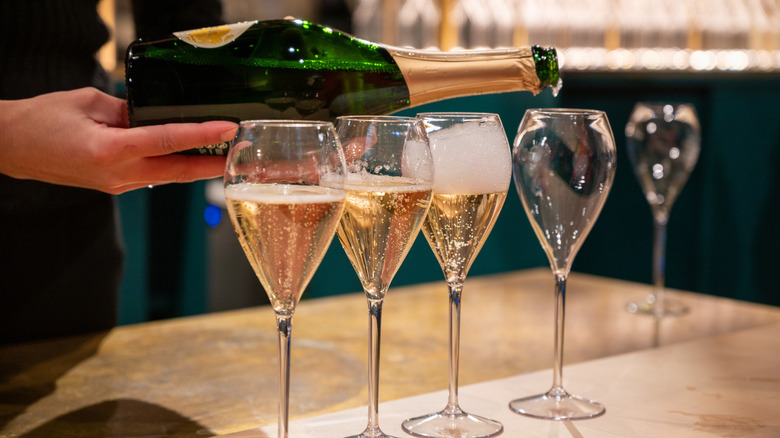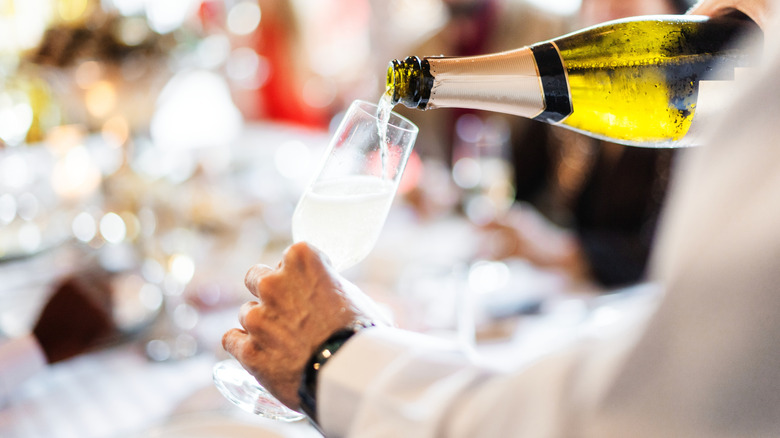Did Dom Pérignon Actually Invent Champagne?
Champagne has had a very long and storied history, but where that history truly begins remains up for debate. Many lovers of the sparkling wine assume its history begins with Dom Pérignon, a French monk who is widely believed to have invented the traditional method that's used to make the drink — now known as the Champagne method — back in 1697. (This is a process wherein winemakers add additional yeast and sugar to the wine just before bottling it. This causes another bout of fermentation to take place inside the bottle, resulting in the drink developing its trademark bubbles.) However, according to the British, this is not entirely true. Instead, they suggest that this method was being used in England over 30 years before Pérignon made his "discovery."
Christopher Merrett is believed to be the first person who recorded the so-called Champagne method being used. In a 1662 paper presented to The Royal Society, Merrett claimed that English winemakers had long been adding "vast quantities of sugar and molasses" to their wine in order to make it fizzy. Thus, while often credited to the French monk, it may well have been Englishmen who first purposefully produced sparkling wine using the Champagne method. If this is true, they should get at least some credit for the invention of Champagne.
Winemakers used to detest bubbles
While there is now a sparkling wine for every occasion (and price), during the 17th century, fizziness in wine was generally considered to be a bad thing, especially in France. In fact, when Dom Pérignon discovered his method in 1697, he was actually trying to come up with a way to reduce the amount of carbonation present in wine. One of the reasons why sparkling wine had such a bad reputation in France at this time was because French wine bottles were quite weak and, if a wine was well carbonated, they had a tendency to explode. (For this reason, the French didn't often enjoy the wonderful pairing of oysters and sparkling Champagne at this time.)
The British, on the other hand, had been producing much sturdier bottles since the early 1600s. These bottles were capable of holding the fizzy liquid without breaking. While it is not known if this was one of the reasons why the British were experimenting with adding sugar to bottled wine, it stands to reason that the sturdier bottles meant more sparkling wine was being produced, stored, and drunk in England at this time than in France.
So, while Champagne is undoubtedly a French product, it's best not to forget that the French were not the first people to purposely create fizzy wine. Instead, British winemakers and their strong bottles are to thank for Champagne's nascent beginnings. And who knows, as climate change continues to influence how sparkling wine is produced, England might have the final say on how Champagne is made too.

